When you hear someone say, Snow, what comes to your mind? For me, it is all about the stimulation of activities. The powdery snow depths and its surface area make me excited to walk on it.
But before you grab your lightweight snowshoes and head outdoors, you need to know how much snow do you need to snowshoe. Ideally, there should be at least six inches of snow.
A flat terrain will not be much help, and you do not want to risk damaging your footwear. So let us get to business and see the best time to go snowshoeing.
When Is The Best Time To Go Snowshoeing?
To have the perfect experience of snowshoeing, a decent amount of freshly fallen snow is required. Ideally, six inches of fluffy snow on the ground is a great count. If there is less snow than that, you will end up ruining your snowshoes.
Spring can be a good showtime for snowshoeing. Although winter is not necessarily a bad season, but outdoor activity is at its best when the sun is shining, and you are in nature’s most breathtaking settings.

But why Spring? We usually end up making the mistake of considering spring a time when the snow melts. Well, nothing but a myth! The night is still chilly, freezing everything outdoors, which eventually makes the day cold and helps the snow to stay intact.
Another reason is that one can extend their hiking time since daylight is present for longer hours in Spring.
Snowshoeing in winter can be a great challenge. You need to put layers on for an adventure like this. More weight on your body will end up making you tired before you know it.
The weather in Spring is more predictable, and there is a minimum chance of snowstorms. But having said that, everyone has their own choice for this kind of great exercise.
The Impact of Terrain While On Snowshoes
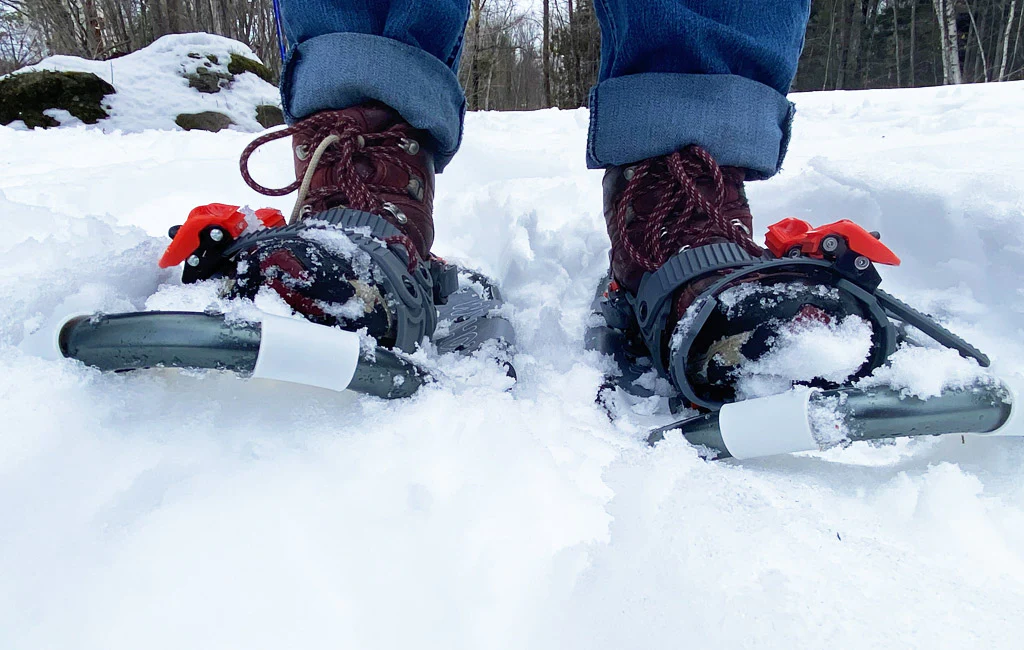
Depending on your field, you can opt for flat, rolling, or mountain terrain snowshoes.
Flat terrain
A plain terrain receives equal foot pressure on the ground. Snowshoes designed for an even path have basic crampons with no heel lift and a minimum amount of snow bite.
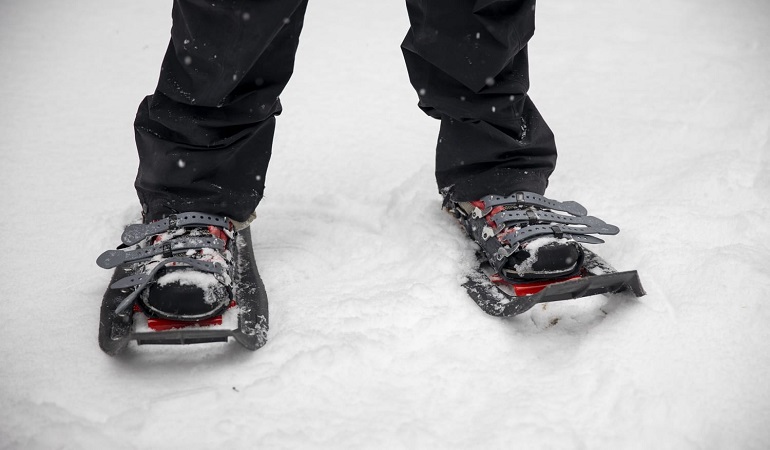
They attach your entire shoe to the snowshoe making your foot stable without any slide-outs. You would want to wait for a few inches of snow to fall on this terrain to start the activity.
Rolling terrain
The snowshoes for rolling landscapes have a more assertive grapnel and a slight heel lift to help you climb the slopes. In addition, you may need a rotating or floating binding that will help you adjust between uphill and downhill paths.
Mountain terrain
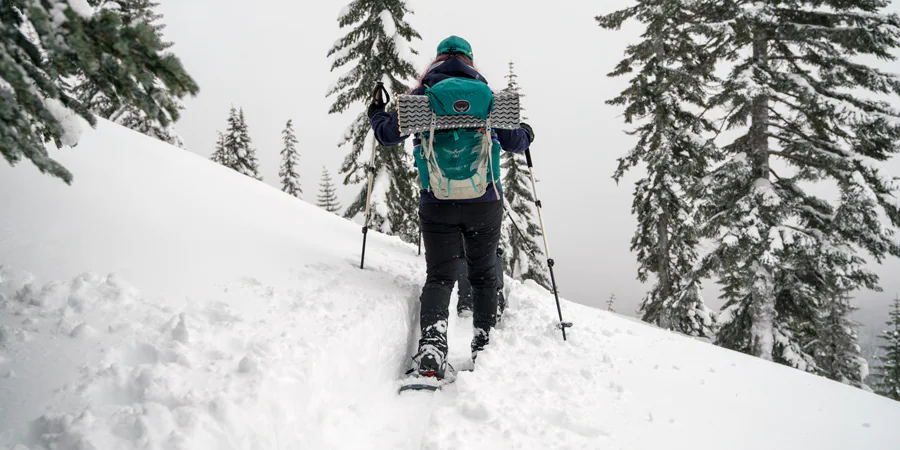
The mountain terrain is a tough, traversing, steep hill. You’ll want snowshoes with highly aggressive crampons and a high-heel lift to make up for the slope beneath. All the energy you would expect from footwear.
Make sure to go through the type of field you are heading into. After all, balance is a lifesaver.
What Should I Know Before Snowshoeing?
Whether you are a beginner or an amateur, there are some essentials you need to keep in mind before snowshoeing. Let us cover some major ones for all of you out there.
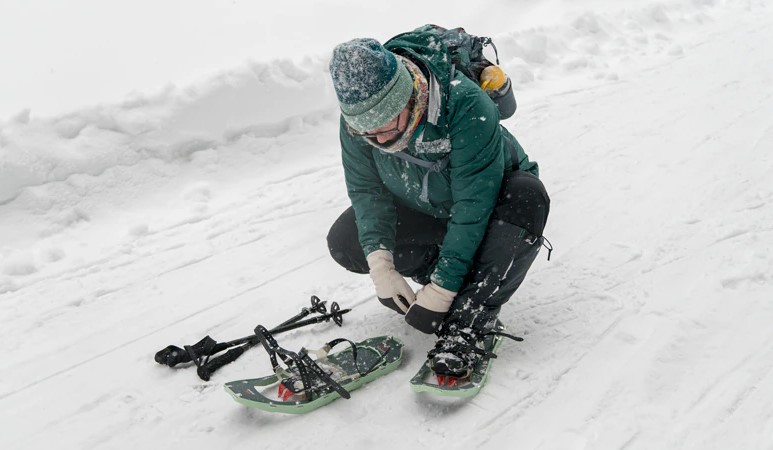
Buying Snowshoes
Do not buy them as soon as you plan for this activity. Rent snowshoes instead. I understand owning one is great comfort, but you need to be smart.
If it’s the first time you are unsure of the activity, dive in with rented shoes. See if you enjoy the snowshoeing experience and how the slopes behave. Enjoyed? Go ahead, and buy the correct size.
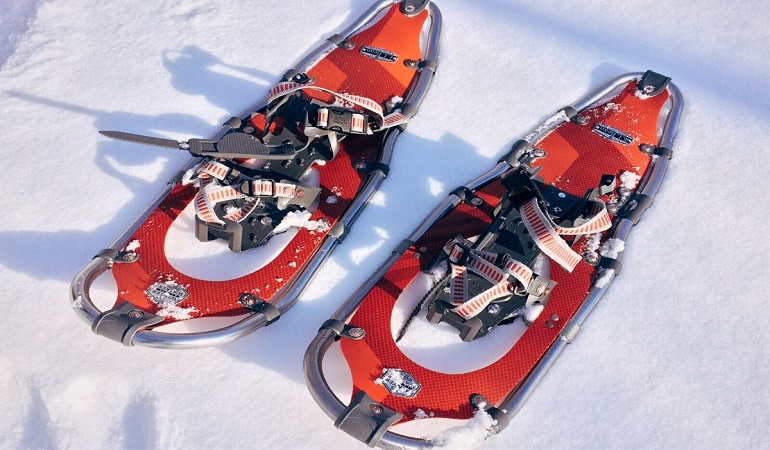
Practice in Groups
As a beginner, do not make the mistake of going alone. Hike with a pack. Those mountains can challenge your beginner’s ability, and you can hurt yourself or even get lost.
Safety Tips
In most places, there are rules and regulation boards present. Make sure to go through those tips to traverse smoothly. Don’t worry about not knowing which trails you are not supposed to cross; you will get all the required information on the spot.
Boots
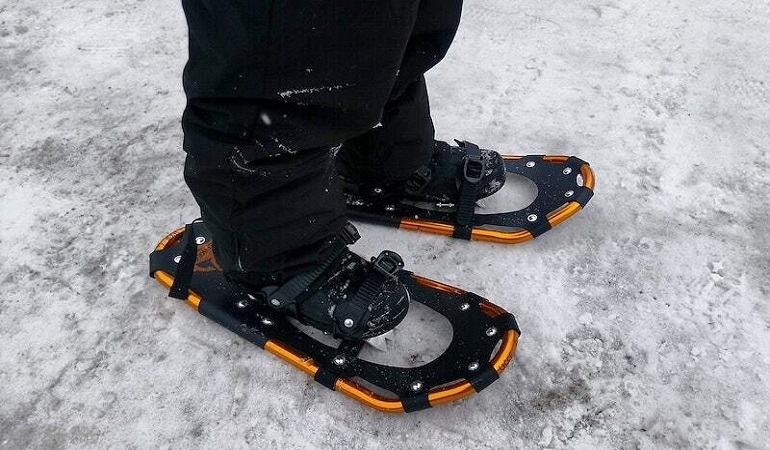
Wear winter snowshoeing boots. They will avoid your feet from getting wet from snow. Don’t make this a spoiled sport for yourself by not listening to your body.
Snowshoe Pole
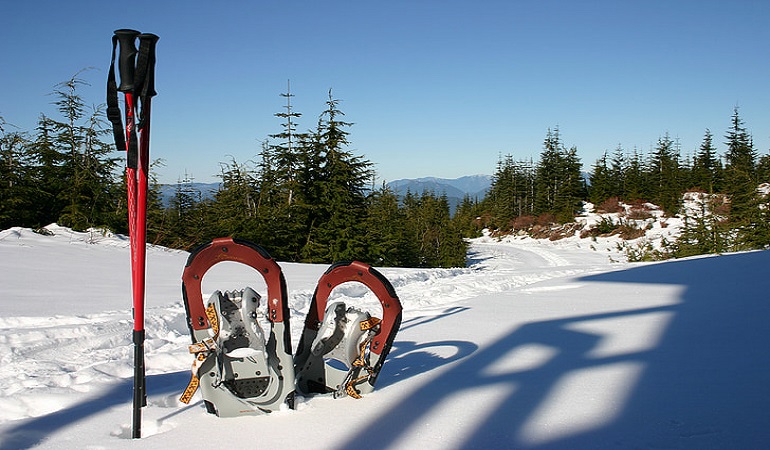
Wearing snowshoes is important but keeping your snowshoe pole is a must. Don’t leave it behind; you will end up making the worse decision.
Start Easy
As a beginner, you should start on a short and plain trail. A read-up on the track before going will not be enough. You should visit the place and be able to know which trail suits you best. Avoid the complicated paths and opt for an easy one. Once you get used to it, upgrade to the next level.
Can I Snowshoe in Deep Snow?
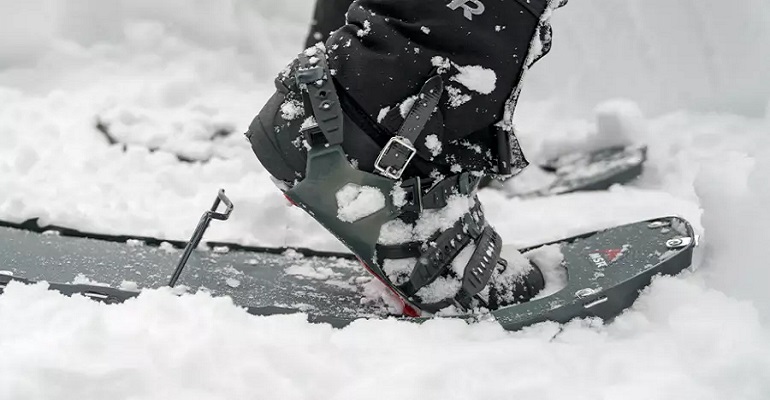
Yes! You surely can. But be well prepared so that you have a great time snowshoeing. Wear thick slacks and socks that cover the gap your shoes have. It will help you prevent getting snow in your boots.
Always get a weather forecast before stepping into winter sports. In case the weather is not suitable, drop the plan. Prefer going on a day you are more comfortable with. One more essential thing – do not forget to keep your trekking poles with you. They are your best friends for the trip.
Comparing Snowshoes to Hiking Boots

There is no doubt about these both doing their job well. But, there are certain factors that will help you decide when to use which. So, let me not keep you waiting and proceed with the comparison.
Traction
Snowshoes have excellent traction in the snow, whereas hiking boots’ grip depends much on the style.
Weight
Snowshoes are heavy in weight as compared to hiking boots. Most snowshoes are designed in a way to hold you firm in any kind of depth.
Waterproof
This is one of a few reasons that influence your choice of pick. Snowshoes are typically designed to tackle snow, so they will definitely be waterproof. Additionally, they extend high up your leg, keeping the snow from getting into your shoe with their tight cuffs.
On the other hand, hiking boots are not water resistant and make your feet wet if you sink deeper into the snow. Also, they do not have a tight cuff which eventually will allow snow to enter your boots.
Breathability
Due to their lack of breathability, snow boots run the risk of accumulating unwanted moisture inside due to sweat. Of course, wearing good moisture-wicking hiking socks will be beneficial, but you might prefer more permeable hiking shoes.
Insulation
The insulation level of hiking boots will depend on the kind of ground you shop for. Plenty of them has good insulation that will keep you warm during a snowstorm. On the other hand, all the snowshoes are well-insulated, providing perfect warmth and comfort.
Versatility
Talk about being versatile, and you will end up making your decision in favor of hiking boots. If you are someone who keeps up with hike all year round, you can get the hiking footwear – I dare not convince you otherwise. Economical and a smart move.

But if you are someone who likes to walk on untouched snow, go for snowshoes. Because they, my friend, are only designed for the white stuff.
Find the Right Snowshoes
Finding the right snowshoe is important if someone wants to enjoy snowshoeing to the fullest. Know your ground and surface before you step into this practice.
Having lots of grips in your shoe is important if you want to go on a snowshoeing adventure. Make sure you know what size and form of snowshoes you require.
Conclusion
Make sure there is enough snow, and start snowshoeing if you haven’t yet explored it. Buy snowshoes that fit you best, and keep all your necessary gear and equipment packed up in your backpack.
It is a safe activity; just make the right purchase that can tackle enough snow for you to walk.
0 Comments